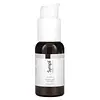What's inside
What's inside
 Key Ingredients
Key Ingredients

 Benefits
Benefits

 Concerns
Concerns

 Ingredients Side-by-side
Ingredients Side-by-side

Water
Skin ConditioningHamamelis Virginiana Water
AstringentCassia Angustifolia Seed Polysaccharide
Skin ConditioningGlycerin
HumectantAloe Barbadensis Leaf Juice
Skin ConditioningDimethyl Sulfone
SolventSodium Ascorbyl Phosphate
AntioxidantSnail Secretion Filtrate
Skin ConditioningCentella Asiatica Extract
CleansingSimmondsia Chinensis Seed Oil
EmollientTocopheryl Acetate
AntioxidantHydroxyethyl Ethylcellulose
EmulsifyingCarrageenan
Equisetum Arvense Extract
AstringentPelargonium Graveolens Oil
MaskingTaraxacum Officinale Extract
Skin ConditioningGeranium Maculatum Extract
TonicSodium Benzoate
MaskingPotassium Sorbate
PreservativeEthylhexylglycerin
Skin ConditioningWater, Hamamelis Virginiana Water, Cassia Angustifolia Seed Polysaccharide, Glycerin, Aloe Barbadensis Leaf Juice, Dimethyl Sulfone, Sodium Ascorbyl Phosphate, Snail Secretion Filtrate, Centella Asiatica Extract, Simmondsia Chinensis Seed Oil, Tocopheryl Acetate, Hydroxyethyl Ethylcellulose, Carrageenan, Equisetum Arvense Extract, Pelargonium Graveolens Oil, Taraxacum Officinale Extract, Geranium Maculatum Extract, Sodium Benzoate, Potassium Sorbate, Ethylhexylglycerin
Water
Skin ConditioningSodium Ascorbyl Phosphate
AntioxidantGlycerin
HumectantButylene Glycol
HumectantSaccharide Isomerate
HumectantCitrus Aurantium Dulcis Oil
MaskingSodium Hyaluronate
HumectantChamomilla Recutita Flower Extract
MaskingCitrus Aurantium Dulcis Callus Culture Extract
Skin ConditioningXanthan Gum
EmulsifyingSodium Benzoate
MaskingCarrageenan
Sclerotium Gum
Emulsion StabilisingPhenoxyethanol
PreservativeEthylhexylglycerin
Skin ConditioningPolysorbate 20
EmulsifyingPotassium Sorbate
PreservativeCitric Acid
BufferingSodium Citrate
BufferingCellulose Gum
Emulsion StabilisingSodium Polyacrylate
AbsorbentCI 77492
Cosmetic ColorantCI 77491
Cosmetic ColorantWater, Sodium Ascorbyl Phosphate, Glycerin, Butylene Glycol, Saccharide Isomerate, Citrus Aurantium Dulcis Oil, Sodium Hyaluronate, Chamomilla Recutita Flower Extract, Citrus Aurantium Dulcis Callus Culture Extract, Xanthan Gum, Sodium Benzoate, Carrageenan, Sclerotium Gum, Phenoxyethanol, Ethylhexylglycerin, Polysorbate 20, Potassium Sorbate, Citric Acid, Sodium Citrate, Cellulose Gum, Sodium Polyacrylate, CI 77492, CI 77491
Ingredients Explained
These ingredients are found in both products.
Ingredients higher up in an ingredient list are typically present in a larger amount.
Carrageenan comes from red seaweed or algae. It is made up of polysaccharides and a highly flexible compound. Red algae cell walls are rich in carrageenan.
In cosmetics, it helps to thicken the texture. Studies show carrageenan extracted from red algae possess antioxidant properties. Components found in carrageenan include: lipids, fatty acids, Vitamin E, proteins, and several amino acids.
Learn more about different types of algae.
Carrageenan is also commonly used in medicine and food. It is a vegan alternative to animal-based gelatin.
Learn more about CarrageenanEthylhexylglycerin (we can't pronounce this either) is commonly used as a preservative and skin softener. It is derived from glyceryl.
You might see Ethylhexylglycerin often paired with other preservatives such as phenoxyethanol. Ethylhexylglycerin has been found to increase the effectiveness of these other preservatives.
Glycerin is already naturally found in your skin. It helps moisturize and protect your skin.
A study from 2016 found glycerin to be more effective as a humectant than AHAs and hyaluronic acid.
As a humectant, it helps the skin stay hydrated by pulling moisture to your skin. The low molecular weight of glycerin allows it to pull moisture into the deeper layers of your skin.
Hydrated skin improves your skin barrier; Your skin barrier helps protect against irritants and bacteria.
Glycerin has also been found to have antimicrobial and antiviral properties. Due to these properties, glycerin is often used in wound and burn treatments.
In cosmetics, glycerin is usually derived from plants such as soybean or palm. However, it can also be sourced from animals, such as tallow or animal fat.
This ingredient is organic, colorless, odorless, and non-toxic.
Glycerin is the name for this ingredient in American English. British English uses Glycerol/Glycerine.
Learn more about GlycerinPotassium Sorbate is a preservative used to prevent yeast and mold in products. It is commonly found in both cosmetic and food products.
This ingredient comes from potassium salt derived from sorbic acid. Sorbic acid is a natural antibiotic and effective against fungus.
Both potassium sorbate and sorbic acid can be found in baked goods, cheeses, dried meats, dried fruit, ice cream, pickles, wine, yogurt, and more.
You'll often find this ingredient used with other preservatives.
Learn more about Potassium SorbateSodium Ascorbyl Phosphate is a form of Vitamin C. It is the salt of ascorbic acid.
This ingredient is more gentle than ascorbic acid. It is also more stable when exposed to light and oxygen.
Vitamin C helps reduce redness, improve skin texture, reduce the effects of aging, reduce the visibility of dark spots, and brighten skin.
Your skin uses Vitamin C to produce collagen and collagen production plays a role in having a strong skin barrier and plump skin. As an antioxidant, this ingredient also helps reduce the signs of aging such as fine-lines and wrinkles.
VItamin C helps brighten skin by blocking the process of skin darkening.
In a 2011 study, Sodium Ascorbyl Phosphate was found to have antibacterial properties. This may help treat acne.
Read more about other types of Vitamin C:
Learn more about Sodium Ascorbyl PhosphateSodium Benzoate is a preservative. It's used in both cosmetic and food products to inhibit the growth of mold and bacteria. It is typically produced synthetically.
Both the US FDA and EU Health Committee have approved the use of sodium benzoate. In the US, levels of 0.1% (of the total product) are allowed.
Sodium benzoate works as a preservative by inhibiting the growth of bacteria inside of cells. It prevents the cell from fermenting a type of sugar using an enzyme called phosphofructokinase.
It is the salt of benzoic acid. Foods containing sodium benzoate include soda, salad dressings, condiments, fruit juices, wines, and snack foods.
Studies for using ascorbic acid and sodium benzoate in cosmetics are lacking, especially in skincare routines with multiple steps.
We always recommend speaking with a professional, such as a dermatologist, if you have any concerns.
Learn more about Sodium BenzoateWater. It's the most common cosmetic ingredient of all. You'll usually see it at the top of ingredient lists, meaning that it makes up the largest part of the product.
So why is it so popular? Water most often acts as a solvent - this means that it helps dissolve other ingredients into the formulation.
You'll also recognize water as that liquid we all need to stay alive. If you see this, drink a glass of water. Stay hydrated!
Learn more about Water